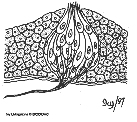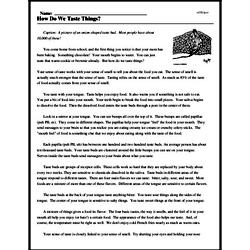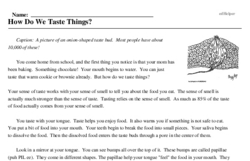How Do We Taste Things?
Caption: A picture of an onion-shaped taste bud. Most people have about 10,000 of these!
You come home from school, and the first thing you notice is that your mom has been baking. Something chocolate! Your mouth begins to water. You can just taste that warm cookie or brownie already. But how do we taste things?
Your sense of taste works with your sense of smell to tell you about the food you eat. The sense of smell is actually much stronger than the sense of taste. Tasting relies on the sense of smell. As much as 85% of the taste of food actually comes from your sense of smell.
You taste with your tongue. Taste helps you enjoy food. It also warns you if something is not safe to eat. You put a bit of food into your mouth. Your teeth begin to break the food into small pieces. Your saliva begins to dissolve the food. Then the dissolved food enters the taste buds through a pore in the center of them.
Look in a mirror at your tongue. You can see bumps all over the top of it. These bumps are called papillae (puh PIL ee). They come in different shapes. The papillae help your tongue "feel" the food in your mouth. They send messages to your brain so that you realize you are eating creamy ice cream or crunchy celery sticks. The "mouth feel" of food is something else that we enjoy about eating along with the taste of the food.




